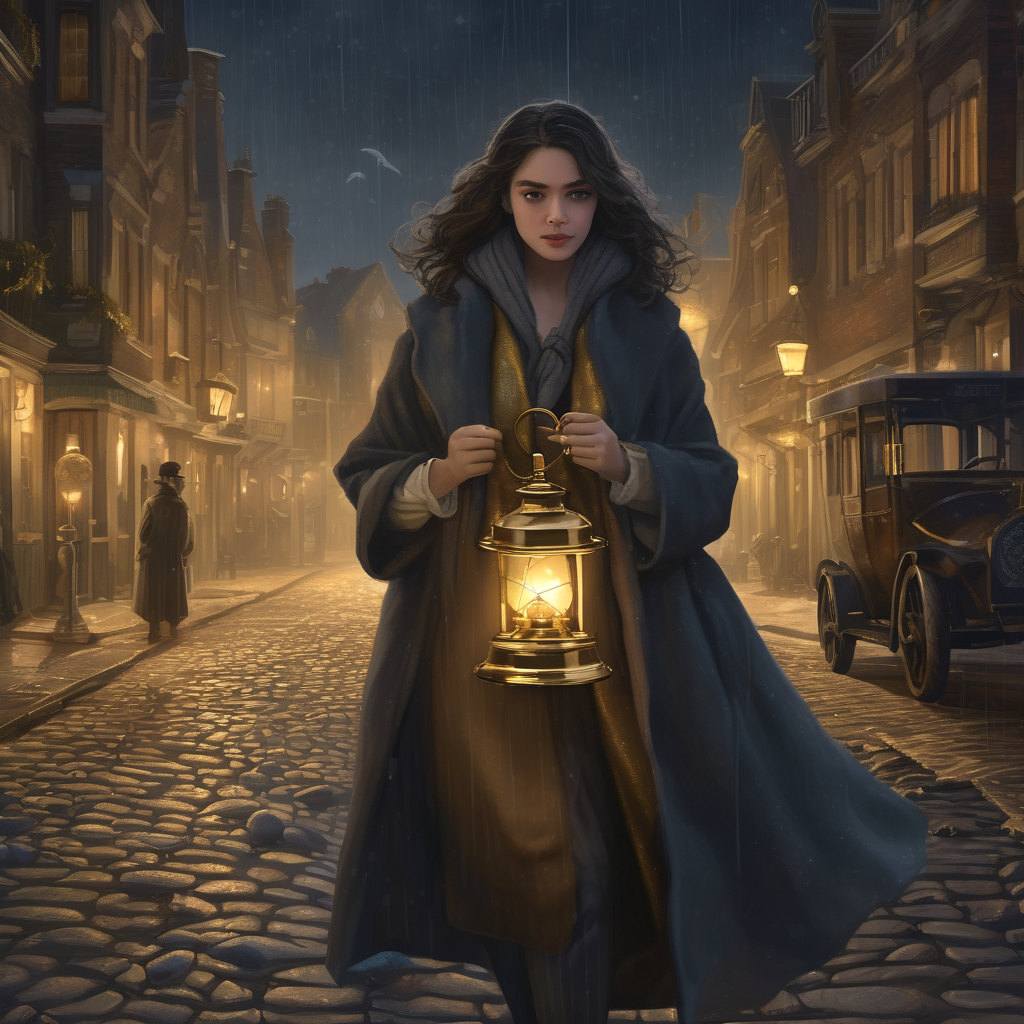The salt-stained letters arrived on Clara’s doorstep three days after her father’s funeral, wrapped in oilcloth that reeked of centuries-old brine. The courier, a weather-beaten woman with barnacles growing from her knuckles, spoke only to say they had been recovered from a shipwreck off the Azores—one that had been underwater for five hundred years.
Clara’s father had been the Royal Cartographer, keeper of maps that charted not just the known world, but the spaces between certainty and legend. She had inherited his workshop, though she possessed none of his gift for reading the whispers that coastlines made when the tide was just right.
The letters bore Fernando de Magallanes’s seal, but they were addressed to someone called “The Keeper of Impossible Distances”—a title her father had muttered in his delirium during his final illness. Inside, the ink ran red as fresh blood despite the water damage, and the words shifted like living things across the parchment.
“Clara,” the first letter began, though it was dated 1521, “by the time you read this, I will have been dead for five centuries, but the maps your father draws have shown me that death is merely another ocean to navigate. I write to you from the circumference of the world, where all journeys end and begin again.”
She dropped the letter, watching it flutter to the workshop floor where it landed among her father’s scattered instruments. A compass needle spun wildly, pointing not north but toward the letter itself. When she picked it up again, new words had appeared in the margins, written in her father’s familiar hand: “The last map is hidden where the first step was taken.”
The workshop filled with the sound of distant waves.
Outside, autumn rain drummed against the windows of the narrow house that had sheltered generations of map-makers. Clara lit the whale oil lamp that had guided her father through countless nights of drafting impossible coastlines. In its flickering light, she unfolded the second letter.
“Your father and I have been corresponding across the centuries,” Magellan’s voice continued from the page. “He has been tracking my true route—not the one recorded in the history books, but the path I took through the spaces that exist only when you’re searching for something that cannot be found. The Strait that bears my name is merely the shadow of the passage I actually discovered.”
Clara’s breath misted in the suddenly cold air. She wrapped her shawl tighter and continued reading.
“There is a map, the most important one your father ever drew. It shows the way back to the place where wonder was first discovered—before it was catalogued, measured, and filed away in the dusty archives of certainty. But maps, as your father knew, are living things. They must be walked to be truly read.”
The third letter was shorter, written in both Magellan’s hand and her father’s, the words intertwining like lovers’ fingers: “Follow the compass that points to longing. When you reach the place where the sea tastes of childhood and the horizon bends to meet your first dream, you will find us both, plotting courses to all the places that have never been discovered because they only exist when you’re brave enough to be lost.”
Clara set down the letters and walked to her father’s desk. Hidden beneath a stack of routine survey maps, she found it—a chart unlike any she had ever seen. The coastlines writhed and shifted as she watched, and instead of conventional notations, the margins bloomed with pressed flowers from places that didn’t exist and marginalia written in languages that predated words.
The compass in her hand began to pull, not north, but toward the front door.
Outside, the rain had stopped, though she could still hear the echo of waves that had never touched this landlocked town. Clara pulled on her father’s coat and stepped into the night, following the impossible compass as it led her past familiar streets that began to grow strange, past houses that aged backwards with each step, until she found herself walking on sand that sparkled with the memory of starlight.
Behind her, the town faded like ink in water. Ahead, two figures stood silhouetted against a horizon that curved impossibly upward—an elderly man in a cartographer’s apron and a explorer in salt-stained velvet, both of them smiling as if they had been waiting for her to find the courage to follow a map that could only be read with the heart.
The compass needle finally stopped spinning, pointing directly at the space between them where they had left room for her to continue the work of charting the unchartable, mapping the distances between what is and what could be, if only someone were brave enough to take the first step into the beautiful unknown.

Leave a Reply